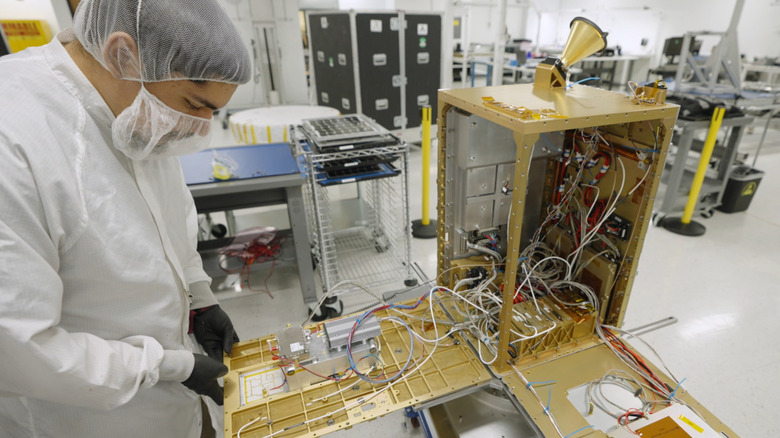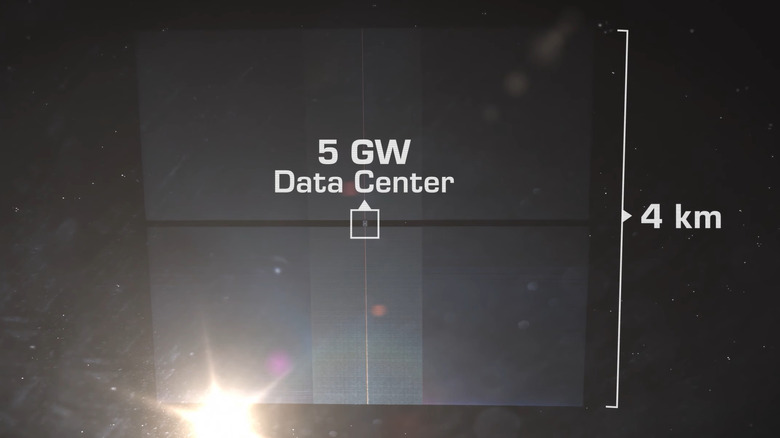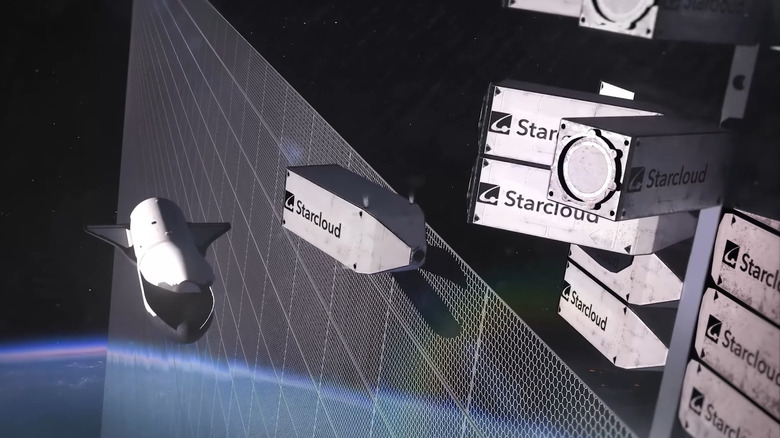Nvidia Is Shooting One Of Its Most Powerful Chips Into Space
Data centers on Earth require access to huge amounts of electricity to power them and huge amounts of water to keep their servers cool. Ambitious startup Starcloud argues that both energy and cooling capacity are more readily and cheaply available in space, making orbital data centers a feasible alternative to centers on Earth. In November, Starcloud plans to launch an Nvidia H100 GPU into orbit to test its functionality in space, with the aim of eventually building extraterrestrial data centers.
In its white paper, Starcloud says that it "has developed a range of concept designs and has not found any insurmountable obstacles," although it is relying heavily on the cost of space launches decreasing over the coming years to make its plans economically viable. The startup plans to eventually create modular data centers in space, hypothesizing that a 5GW data center could be powered by an array of solar panels measuring around four square kilometers (around 1.5 square miles). To dissipate the heat generated by the data center, the startup says it would deploy an array of radiators, which would need to be around half the size of the solar panel array.
Having a data center in space could make processing data from satellites faster, and according to Starcloud, it could also enable AI companies to keep up with compute demands for training latest models.
Data centers consume huge amounts of resources
The data centers would be made up of individual modules which would need to be detached from the center once they reach the end of their working lives. According to the white paper, they could then either be salvaged to reuse their raw materials, or could be allowed to burn up in the Earth's atmosphere.
Tech firms are betting big on the rapid expansion of AI infrastructure, but building huge new data centers on Earth requires vast amounts of resources. As companies like Meta launch data center expansion plans, locals in areas where these centers are located are left worried about being cut off from supplies of clean drinking water, not to mention the exponential increase in electricity consumption.
In many places, the grid simply can't cope, and so tech companies have begun bringing in alternative power sources to keep data centers running. In Memphis, xAI is controversially using gas turbines to power its data centers because the local grid cannot keep up with demand, which has led to significant concerns from residents about the impact of the turbines' emissions on their health.
Despite the concerns about the deepening ecological and humanitarian impact of these data centers, leading AI companies continue to make huge investments in ever-more complex AI models. Chip maker Nvidia is a major investor in these efforts, having recently given OpenAI more than $100 billion in an unprecedented deal. Nvidia has also invested in a group of startups that plan to alleviate some of the problems caused by data centers, with one of those startups being Starcloud.
Starcloud still has major hurdles to overcome
Starcloud's planned November launch of a satellite containing an Nvidia GPU is the first step in its ambitious plans, but it already represents a significant increase in power compared to existing satellites. According to Nvidia, the launch chip is a hundred times more powerful than any previous space operation. However, there are still plenty of hurdles to clear before Starcloud can begin building its extraterrestrial data center.
The startup acknowledges that one of its biggest hurdles is convincing regulators that building such a large data center would not put other satellites at an increased risk of collision. Throughout the history of satellites, the number of devices in orbit has steadily increased, with the Union of Concerned Scientists reporting that there are currently over 7,500 active satellites in orbit. Another hurdle is the launch cost: Starcloud is banking on launches becoming both cheaper and more common over the next decade, and has estimated that one of its 5GW data centers would need around 100 launches to get its GPUs into orbit and a further 100 launches for its solar panel and radiator arrays.
Despite the advancements that will be needed for such a strategy to become feasible, Starcloud's CEO Philip Johnston says that extraterrestrial data centers might become a reality in the near future. In a news release, he predicted that "in ten years, nearly all new data centers will be being built in outer space."


